Tomatoes are one of the most popular vegetables globally, loved for their flavor, versatility, and health benefits. Packed with vitamins A, C, K, antioxidants, and lycopene, tomatoes are excellent for immunity, heart health, and overall wellness.
Many people assume growing high-yield tomatoes requires a large garden, expensive equipment, or special skills. However, as highlighted in the YouTube video “Growing high-yield Tomatoes is not difficult, it’s easy, and there are many fruits”, producing abundant, juicy tomatoes at home is simpler than you think.
With proper guidance, even beginners can grow plump, flavorful tomatoes with high yields, whether on a terrace, balcony, or small backyard. This guide covers step-by-step instructions, tips, and secrets to ensure a bountiful harvest.
Why High-Yield Tomatoes Are a Great Choice
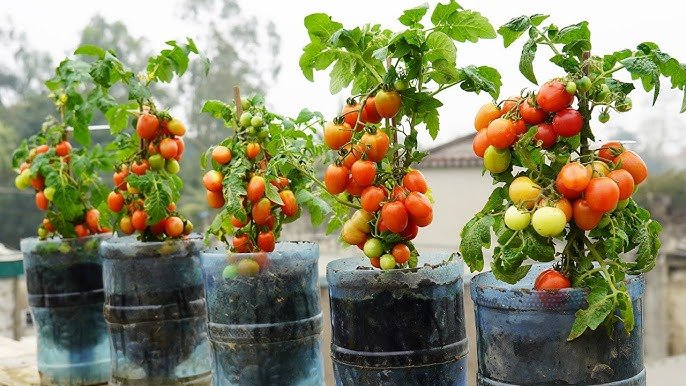
Growing high-yield tomatoes at home offers several benefits:
- Cost-Effective: Grow your own tomatoes instead of buying expensive store-bought ones.
- Healthier and Fresher: Homegrown tomatoes are free from harmful chemicals.
- Space-Efficient: Can be grown in containers, sacks, or vertical supports.
- Continuous Supply: Proper care ensures more fruits per plant throughout the season.
- Delicious Taste: Homegrown tomatoes are juicier, sweeter, and more flavorful than store-bought varieties.
By following the right techniques, you can maximize both yield and quality.
Step 1: Selecting the Right Tomato Variety
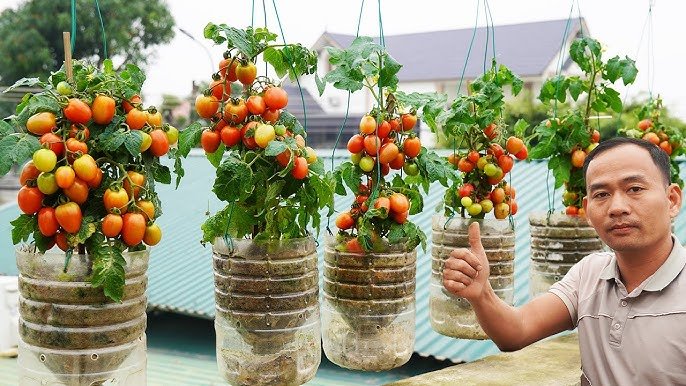
Choosing the right variety is critical for high yield and abundant fruits. Consider these options:
- Cherry Tomatoes: Small, sweet, and extremely prolific.
- Roma or Plum Tomatoes: Ideal for sauces and salads; high-yielding.
- Beefsteak Tomatoes: Large, juicy, and perfect for slicing.
- Hybrid Varieties: Disease-resistant, fast-growing, and highly productive.
Opt for certified seeds or healthy seedlings from a trusted nursery to ensure strong growth and disease resistance.
Step 2: Choosing the Right Container or Growing Medium
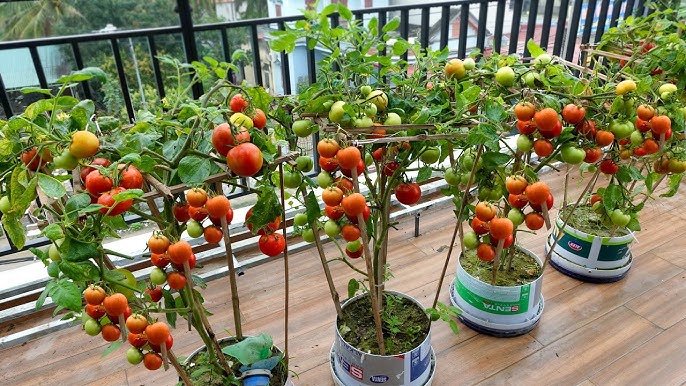
High-yield tomatoes require ample space and nutrient-rich soil.
- Containers: Minimum 20–25 liters per plant.
- Grow Bags or Sacks: Ideal for terraces, balconies, or small spaces.
- Raised Beds: Minimum 12 inches depth for proper root growth.
Soil Preparation:
- 40% garden soil or composted soil
- 30% organic matter (vermicompost, well-rotted cow dung)
- 20% cocopeat or peat moss for moisture retention
- 10% sand or perlite for drainage
A rich, loose medium encourages strong roots, healthy leaves, and many fruits.
Step 3: Preparing and Planting Seeds or Seedlings
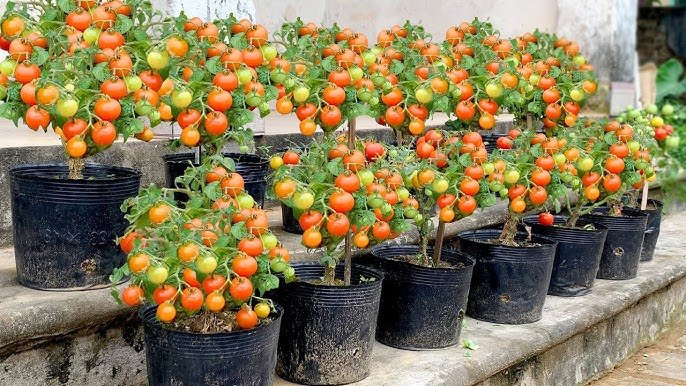
For Seeds:
- Soak seeds in lukewarm water for 12–24 hours to speed germination.
- Sow 2–3 seeds per container, covering lightly with soil.
- Keep soil consistently moist until seeds sprout (7–10 days).
For Seedlings:
- Make a hole large enough for the root ball.
- Plant the seedling and cover with soil, pressing gently.
- Water immediately to help roots settle.
Ensure one plant per container or sack for optimal space and nutrient access.
Step 4: Providing Support for Climbing
Tomatoes are vining plants that need support to grow upright and produce many fruits:
- Use stakes, bamboo sticks, trellises, or cages.
- Tie the main stem loosely with soft cloth or string.
- Support prevents fruits from touching the ground, reducing rot and pest problems.
Proper support also improves sunlight exposure and airflow, which promotes more flowering and fruiting.
Step 5: Watering for Healthy, High-Yield Plants
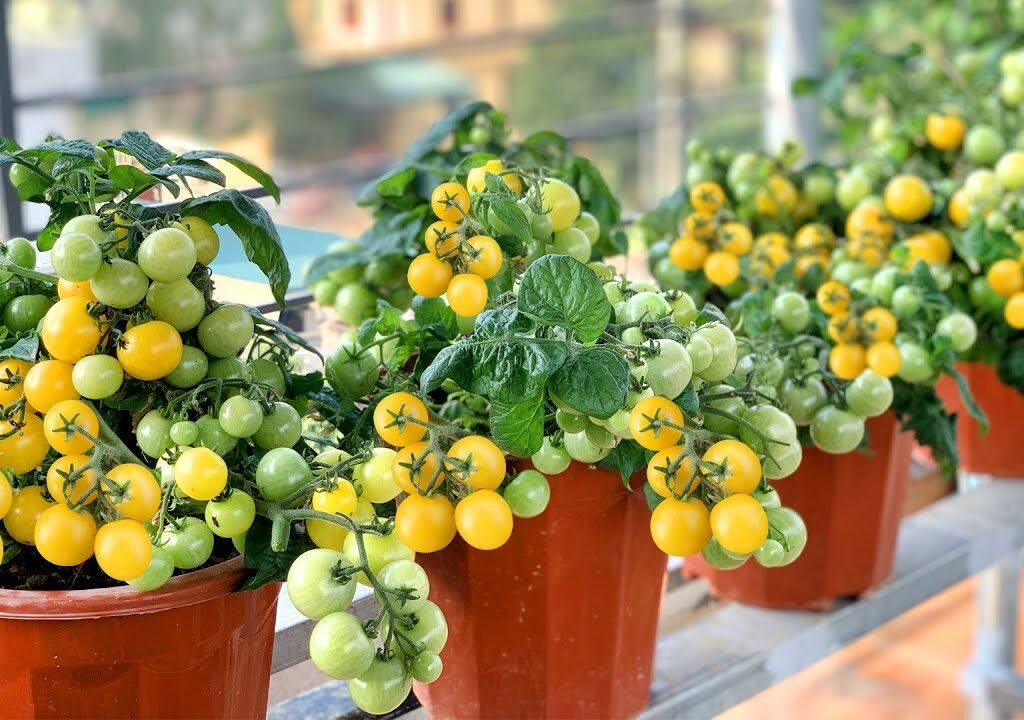
Watering is crucial for juicy, large, and numerous tomatoes:
- Water 2–3 times per week, depending on weather conditions.
- Keep the soil evenly moist, avoiding waterlogging.
- Mulch with straw or dry leaves to retain moisture and regulate soil temperature.
Regular, proper watering ensures strong plant growth and abundant fruiting.
Step 6: Fertilization for Maximum Yield
Tomatoes are heavy feeders; regular fertilization encourages high yield:
- Apply organic fertilizers like vermicompost tea or cow dung slurry every 10–15 days.
- Use potash-rich supplements such as banana peel powder or wood ash to boost flowering and fruiting.
- Avoid excess nitrogen; it increases leaf growth but reduces fruit production.
Balanced fertilization produces many, healthy, and tasty tomatoes.
Step 7: Sunlight and Temperature Requirements
Tomatoes thrive in warm climates with adequate sunlight:
- Provide 6–8 hours of sunlight daily.
- Protect young plants from harsh afternoon sun in very hot climates.
- Maintain moderate temperatures (20–30°C / 68–86°F) for optimal flowering and fruiting.
Sunlight and warmth are essential for high yields and vibrant fruit color.
Step 8: Pollination Tips for More Fruits
Tomato flowers need proper pollination to set fruit:
- Bees and natural pollinators transfer pollen from male to female flowers.
- In areas with low pollinators, gently shake flowers or use a small brush to transfer pollen.
- Adequate pollination ensures better fruit set and more tomatoes per plant.
Monitoring flowers regularly increases overall productivity.
Step 9: Pest and Disease Management
Even well-cared-for tomato plants may face pests or diseases:
| Problem | Solution |
|---|---|
| Aphids | Spray neem oil or garlic-chili solution |
| Whiteflies | Use organic insecticidal soap |
| Fungal infections | Ensure proper spacing, airflow, and avoid wetting leaves |
| Blossom-end rot | Provide consistent watering and calcium-rich soil |
Organic care keeps plants healthy, productive, and chemical-free.
Step 10: Pruning and Training for More Fruits
Pruning encourages high yield and better fruit quality:
- Remove excess leaves and suckers to focus plant energy on fruit production.
- Train vines to climb supports for optimal sunlight and airflow.
- Proper pruning improves fruit size, color, and quantity.
Regular maintenance ensures a continuous and abundant harvest.
Step 11: Harvesting High-Yield Tomatoes
Harvesting is the most rewarding step:
- Cherry tomatoes: Ready in 50–60 days.
- Medium to large varieties: Ready in 70–90 days when fully colored and firm.
- Pick fruits regularly to encourage continuous flowering and fruiting.
Homegrown tomatoes are juicy, flavorful, and superior in taste to store-bought ones.
Step 12: Tips for Continuous High-Yielding Harvest
- Succession Planting: Sow new seeds every 2–3 weeks.
- Soil Enrichment: Add compost after each harvest to maintain fertility.
- Mulching: Reduces moisture loss and protects roots.
- Companion Planting: Basil, marigold, or spinach help repel pests and improve growth.
These practices ensure a long season of abundant, delicious tomatoes.
Conclusion: Grow Many Fruits Easily at Home
Growing high-yield tomatoes is not difficult — with the right care, sunlight, support, and nutrition, anyone can enjoy an abundance of fresh, juicy tomatoes at home.
Whether you have a terrace, balcony, or small backyard, following these steps guarantees healthy, flavorful, and numerous fruits throughout the season. Start today and experience the joy of growing your own tomatoes — easy, inexpensive, and highly rewarding!






Leave A Comment